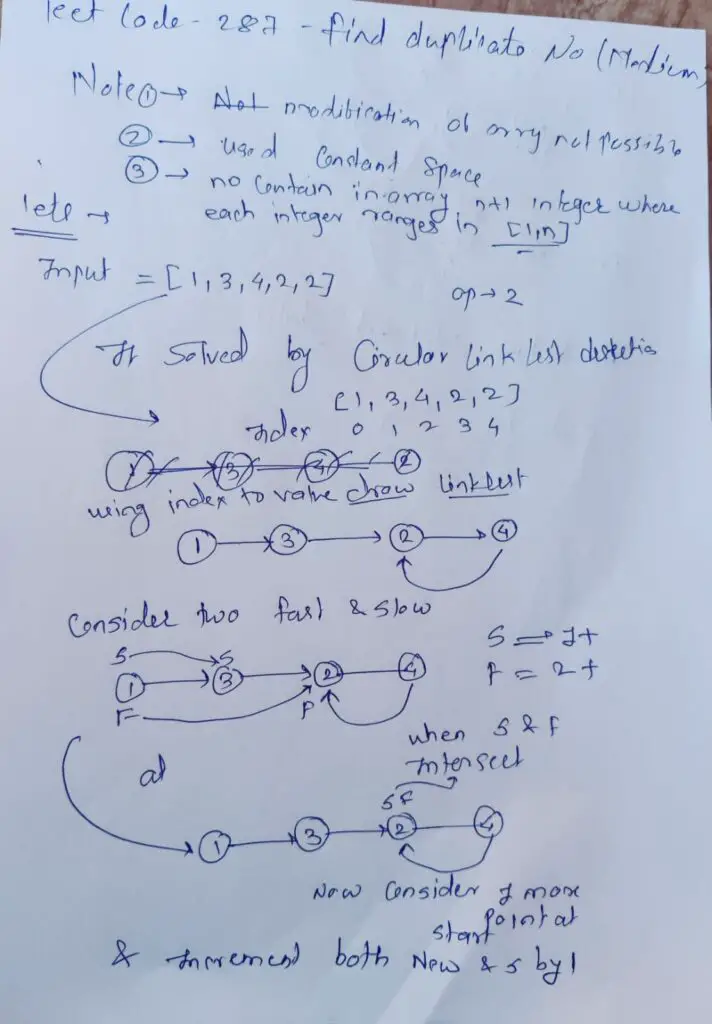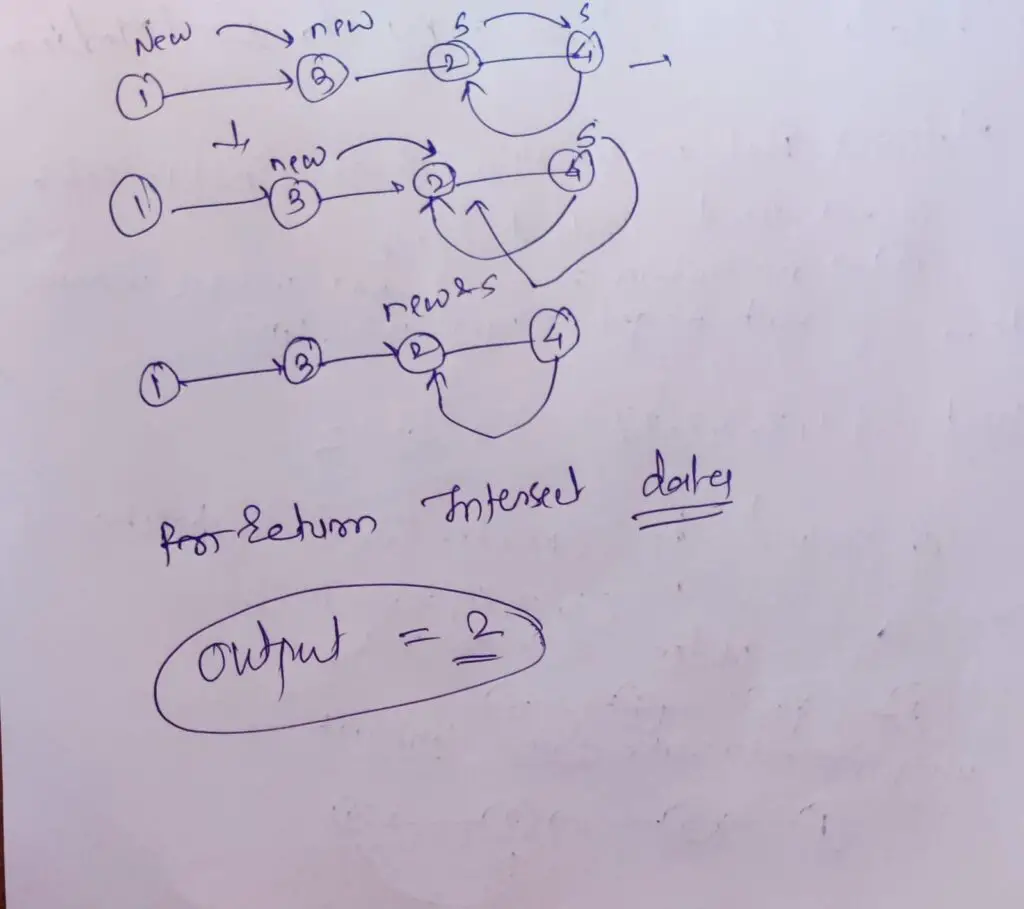Find the Duplicate Number : Finding a sneaky duplicate number in an array can be a real brain-teaser, especially when you’re told not to mess with the array or use too much memory. But fear not! We’ve got a clever trick up our sleeves to crack this code conundrum.
Understanding the Puzzle:
Imagine this: You're handed an array of integers, and there's a twist. Only one number is repeated, and it's your mission to expose this copycat!
The Algorithm Unveiled:
Behold, the secret sauce lies in a legendary algorithm called “tortoise and hare.” 🐢🐇 Let’s break down this detective code:
Note : tortoise and hare Algorithm Also called Floyd’s Cycle Finding Algorithm


Step 1: The Setup
- Two counting pointers, “slow” and “fast,” start at the same spot – the first element of the array,
nums[0]. 🎯
Step 2: Phase 1 – Tracking the Meetup
- In this phase, “slow” moves forward one step, while “fast” moves two steps ahead.
- They keep going until they come to each other like a Hollywood showdown. 💥👊
- What’s the point? This is where the magic begins, and a cycle is born within the array.
Leet Code : Find the Duplicate Number / Element C++ ,Java , Python Solution:
Step 3: Phase 2 – Hare Returns to the Scene
- After finding the epic meetup point, we rewind one of our heroes (either “slow” or “fast”) back to the array’s start,
nums[0]. - Now, both pointers move step by step, but guess what? They’ll meet again.
- When they meet together the second time, that’s our jackpot! 🎰 The value they meet at is the elusive duplicated number in the
numsarray.
Step 4: The Big Reveal
- The secret is out! The number they uncover in Phase 2 is the duplicate you’ve been hunting.
- The best part? The original
numsarray remains unscathed, and we didn’t gobble up extra memory. 🧠💾
Also Read : Leetcode 135 Candy (Hard) Solution
here’s the code for finding the duplicate number in C++, Python, Java, and JavaScript.
C++:
class Solution {
public:
int findDuplicate(vector<int>& nums) {
int slow = nums[0];
int fast = nums[0];
// Phase 1: Find the meeting point
while (true) {
slow = nums[slow];
fast = nums[nums[fast]];
if (slow == fast) {
break;
}
}
// Phase 2: Find the start of the cycle
slow = nums[0];
while (slow != fast) {
slow = nums[slow];
fast = nums[fast];
}
return slow;
}
};Leet Code :Linked List Cycle II Java || Python || C++ solution
Python:
def findDuplicate(nums):
slow = nums[0]
fast = nums[0]
# Phase 1: Find the meeting point
while True:
slow = nums[slow]
fast = nums[nums[fast]]
if slow == fast:
break
# Phase 2: Find the start of the cycle
slow = nums[0]
while slow != fast:
slow = nums[slow]
fast = nums[fast]
return slowLeet Code : Intersection of Two Linked ListsLeet Code – Java | Python | C++ | Dart | Easy Solution
Java:
public class Solution {
public int findDuplicate(int[] nums) {
int slow = nums[0];
int fast = nums[0];
// Phase 1: Find the meeting point
while (true) {
slow = nums[slow];
fast = nums[nums[fast]];
if (slow == fast) {
break;
}
}
// Phase 2: Find the start of the cycle
slow = nums[0];
while (slow != fast) {
slow = nums[slow];
fast = nums[fast];
}
return slow;
}
}JavaScript:
function findDuplicate(nums) {
let slow = nums[0];
let fast = nums[0];
// Phase 1: Find the meeting point
while (true) {
slow = nums[slow];
fast = nums[nums[fast]];
if (slow === fast) {
break;
}
}
// Phase 2: Find the start of the cycle
slow = nums[0];
while (slow !== fast) {
slow = nums[slow];
fast = nums[fast];
}
return slow;
}These code snippets in C++, Python, Java, and JavaScript all implement the same logic for finding the duplicate number using the “tortoise and hare” algorithm.
Conclusion:
By using the “tortoise and hare” trick, we’ve outsmarted the duplicate number puzzle without altering the array or going on a memory . This nifty algorithm showcases the brilliance of problem-solving through clever thinking.
So, next time you’re faced with a similar challenge, remember this elegant solution that keeps the array pristine and memory usage minimal. 🚀🧩
This article decodes the code and its intriguing logic for finding that tricky duplicate number. It showcases the elegance of the “tortoise and hare” algorithm for solving complex puzzles. 🔍🕵️♂️